|
|
|
|
|
|
 |
|
TELEMEDICINE PLATFORM
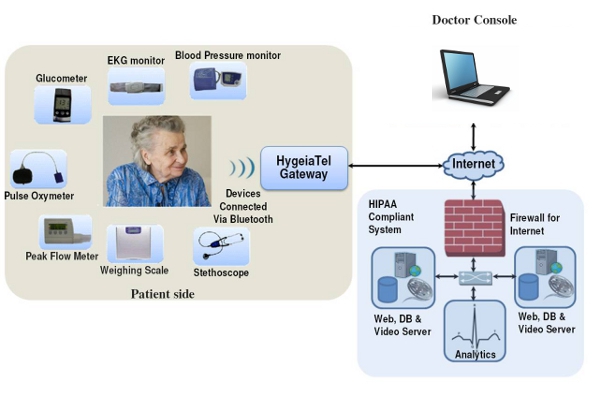 Providing accessibility to quality healthcare anywhere and anytime to all the citizens is one of the challenges of this millennium. Using Information Technology that has the prowess to face this challenge, we have developed an internet based telemedicine platform that has the capability to provide anywhere-anytime consultation and is scalable. This cost effective solution can be used to manage chronic health conditions and also treat non-emergency health problems. This telemedicine platform, in addition to providing remote vital signs monitoring, can also offer cognitive support to all the stakeholders involved in healthcare including the patient and his family.
Providing accessibility to quality healthcare anywhere and anytime to all the citizens is one of the challenges of this millennium. Using Information Technology that has the prowess to face this challenge, we have developed an internet based telemedicine platform that has the capability to provide anywhere-anytime consultation and is scalable. This cost effective solution can be used to manage chronic health conditions and also treat non-emergency health problems. This telemedicine platform, in addition to providing remote vital signs monitoring, can also offer cognitive support to all the stakeholders involved in healthcare including the patient and his family.
|

|
|
 |
|
|
CHRONIC DISEASE MANAGEMENT
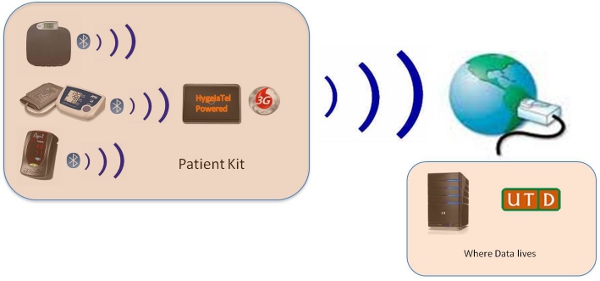 The ‘Chronic Disease Management System’ developed at the University of Texas at
Dallas is a smart system that monitors physiological information and reports to the
Electronic Health Record (EHR). The EHR with its health analytics and alerts activated,
provides constant information about the disease state to both the doctors and the patients.
The doctors can access the EHR to obtain their patients’ status or the data can be pushed to
their smart phone whereas the patients use the web to obtain their disease state information.
Telemonitoring of vital signs such as weight, blood pressure and blood glucose level and posting of the data in an electronic recording system can result in increased adherence to evidence based guidelines, improved patient outcomes, and direct/indirect economic savings compared to conventional chronic disease management.
The ‘Chronic Disease Management System’ developed at the University of Texas at
Dallas is a smart system that monitors physiological information and reports to the
Electronic Health Record (EHR). The EHR with its health analytics and alerts activated,
provides constant information about the disease state to both the doctors and the patients.
The doctors can access the EHR to obtain their patients’ status or the data can be pushed to
their smart phone whereas the patients use the web to obtain their disease state information.
Telemonitoring of vital signs such as weight, blood pressure and blood glucose level and posting of the data in an electronic recording system can result in increased adherence to evidence based guidelines, improved patient outcomes, and direct/indirect economic savings compared to conventional chronic disease management.
|

|
|
 |
|
|
SLEEP QUALITY & APNEA ASSESSMENT
Sleep Quality
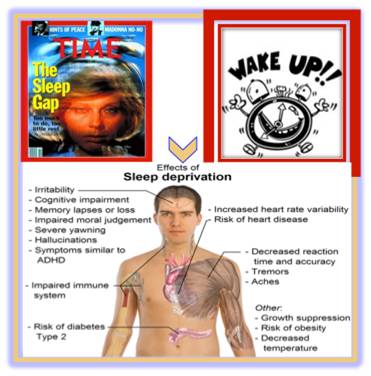 Sleep, a physical and mental resting state, is a restorative process. The productivity/efficiency of a person is directly proportional to the amount and quality of sleep that a person had in the prior night. But, more importantly, behavioral habits, sleep related breathing disorders such as apnea, drugs (such as sleeping pills) and alcoholic beverages can suppress certain stages of sleep, leading to poor sleep quality or even sleep deprivation that have serious effects on individual’s health and wellness, and lead to various medical problems including cognitive impairment and heart diseases.
Sleep, a physical and mental resting state, is a restorative process. The productivity/efficiency of a person is directly proportional to the amount and quality of sleep that a person had in the prior night. But, more importantly, behavioral habits, sleep related breathing disorders such as apnea, drugs (such as sleeping pills) and alcoholic beverages can suppress certain stages of sleep, leading to poor sleep quality or even sleep deprivation that have serious effects on individual’s health and wellness, and lead to various medical problems including cognitive impairment and heart diseases.
Sleep efficiency measures of an individual provide an objective assessment to gauge the quality of sleep. We have developed a home–based, automated and non–intrusive system that provides sleep quality assessment.
Sleep Apnea
 Sleep Apnea is a sleep related breathing disorder, commonly known as Obstructive Sleep Apnea (OSA), is a common disorder that affects about 4% of the general population. People with sleep apnea literally stop breathing repeatedly during their sleep, often for a 10–30 seconds and as many as hundreds of times during one night. The frequent arousals and the inability to achieve or maintain the deeper stages of sleep can lead to excessive daytime sleepiness, automobile accidents, personality changes, decreased memory, erectile dysfunction (impotence), and depression. OSA has also been linked to angina, nocturnal cardiac arrhythmias, myocardial infarction and stroke.
Sleep Apnea is a sleep related breathing disorder, commonly known as Obstructive Sleep Apnea (OSA), is a common disorder that affects about 4% of the general population. People with sleep apnea literally stop breathing repeatedly during their sleep, often for a 10–30 seconds and as many as hundreds of times during one night. The frequent arousals and the inability to achieve or maintain the deeper stages of sleep can lead to excessive daytime sleepiness, automobile accidents, personality changes, decreased memory, erectile dysfunction (impotence), and depression. OSA has also been linked to angina, nocturnal cardiac arrhythmias, myocardial infarction and stroke.
We have developed a low–cost, realtime sleep apnea monitoring system “Apnea MedAssist” for recognizing Obstructive Sleep Apnea (OSA) episodes with a high degree of accuracy for both home and clinical care applications.
|


|
|
 |
|
|
SMART BED
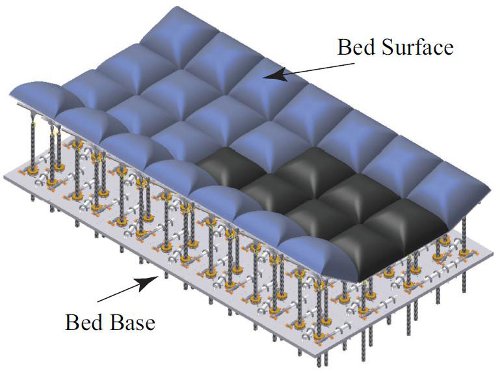 We all spend around 1/3 of our life in bed at home. A patient at a hospital spends 80-100% of his or her time in bed. Thus, the bed can potentially become an essential part of the next generation of health care systems and it will definitely play a major role in the personalization and automation of health systems. Future smart beds will need a high level of intelligence, through a growing ubiquitous computation capability, to improve quality of life and service.
We all spend around 1/3 of our life in bed at home. A patient at a hospital spends 80-100% of his or her time in bed. Thus, the bed can potentially become an essential part of the next generation of health care systems and it will definitely play a major role in the personalization and automation of health systems. Future smart beds will need a high level of intelligence, through a growing ubiquitous computation capability, to improve quality of life and service.
This intelligence includes, but is not limited to ...
- short and long term monitoring
- biological and behavioral data capture
- medically meaningful behavioral analysis
These functions are focused on prevention, prediction, and management of maladies including cardiovascular and respiratory diseases, movement related problems like pressure ulcers, and even discerning mental conditions through observation. This intelligence is supported by a state-of-the-art hardware platform consisting of sensor and actuation systems that facilitate the collection of biosignal data and physical interaction with the patient.
|

|
|
 |
|
|
COGNITIVE SUPPORT SYSTEM FOR HEALTHCARE
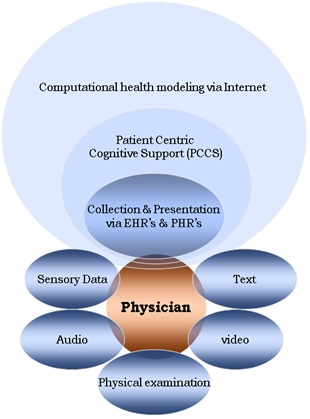 Providing a safe and superior healthcare to all the citizens is a social responsibility of a civilized nation like ours. With growing older population and dwindling healthcare workers, this is becoming a bigger challenge. Information Technology which has brought safety and scalability in other areas, can very well do the same in healthcare when applied properly. It is becoming humanly impossible for any doctor or healthcare provider to read and digest all the information present in a patient’s chart in 15 to 30 minutes, which normally the time the doctor or a healthcare provider has to spend with each patient. The other issue is the doctor being abreast of all modern developments in medical science due to the explosion of research information in basic medical and clinical sciences. To provide evidence based diagnosis and treatment plan, the knowledge of latest development becomes imperative. These make a strong case for developing a cognitive support system for use by health care providers to augment their ability to provide a superior and an error free healthcare.
Providing a safe and superior healthcare to all the citizens is a social responsibility of a civilized nation like ours. With growing older population and dwindling healthcare workers, this is becoming a bigger challenge. Information Technology which has brought safety and scalability in other areas, can very well do the same in healthcare when applied properly. It is becoming humanly impossible for any doctor or healthcare provider to read and digest all the information present in a patient’s chart in 15 to 30 minutes, which normally the time the doctor or a healthcare provider has to spend with each patient. The other issue is the doctor being abreast of all modern developments in medical science due to the explosion of research information in basic medical and clinical sciences. To provide evidence based diagnosis and treatment plan, the knowledge of latest development becomes imperative. These make a strong case for developing a cognitive support system for use by health care providers to augment their ability to provide a superior and an error free healthcare.
|
|
|
 |
|
|
SMART & FLEXIBLE ECG
 Electrocardiogram (ECG) is one of the most important tools that doctors use to get information about the well being of a person. This tool has been around for more than hundred years but still evolving with modern advancements in technology. We are working on developing a flexible ECG patch that is easier to use, low cost and disposable. The other part of our research on ECG is developing algorithms that can automatically detect changes in the ECG and provide an advance warning. The biggest challenge today in reducing the deaths due to cardiac conditions is, the long delay in calling for help from the time the symptoms are recognized; it averages about more than 30 hours. We hope our advanced warning system helps in reducing this time delay by making the ECG patient-centric.
Electrocardiogram (ECG) is one of the most important tools that doctors use to get information about the well being of a person. This tool has been around for more than hundred years but still evolving with modern advancements in technology. We are working on developing a flexible ECG patch that is easier to use, low cost and disposable. The other part of our research on ECG is developing algorithms that can automatically detect changes in the ECG and provide an advance warning. The biggest challenge today in reducing the deaths due to cardiac conditions is, the long delay in calling for help from the time the symptoms are recognized; it averages about more than 30 hours. We hope our advanced warning system helps in reducing this time delay by making the ECG patient-centric.
|


|
|
 |
|
|
INDOOR NAVIGATION SYSTEM FOR VISUALLY IMPAIRED
People with disabilities have always been at a disadvantage compared to the rest of us. The visually impaired people are at even greater disadvantage since we live in a visual world. Though the visually impaired people can easily adapt to an environment they frequent, with the aid of a cane or a canine or both, they find it difficult when exploring new places. When a visually impaired person is outside, he or she can at least make use of noises around him or her to get an idea of the environment but while inside a building, it is usually calm and he or she cannot always find someone to enquire which makes their life extremely difficult.
We have developed a system called ‘SAVIIN’ to assist visually impaired in indoor navigation. This is based on RFID and smart phones.
|
|
|
 |
|
|
ACOUSTIC NOISE REDUCTION & SPEECH ENHANCEMENT
FOR MRI
 Strong acoustic noise is generated during the scan in Magnetic Resonance Imaging (MRI) and functional MRI (fMRI) rooms. Presence of this harmful and annoying noise interferes with auditory stimuli, speech communication, and imaging process during the MRI/fMRI experiment. As part of our signal processing, noise control, and signal estimation research projects, we have developed novel real-time adaptive signal processing methods to reduce the acoustic noise and enhance speech signals in MRI rooms. The methods improve MRI/fMRI procedures by alleviating disturbing effects of the noise and enabling noise-free online communication with patient and recording of clean speech signals for post analysis by medical staff. The adaptive noise control and speech enhancement methods we have developed offer efficient and cost-effective system designs which would create a safe and comfortable environment for the patients and medical staff in both existing and future MRI rooms. The methods require no structural changes to the MRI system and have no adverse effect on the scanning process and on the acquired image data.
Strong acoustic noise is generated during the scan in Magnetic Resonance Imaging (MRI) and functional MRI (fMRI) rooms. Presence of this harmful and annoying noise interferes with auditory stimuli, speech communication, and imaging process during the MRI/fMRI experiment. As part of our signal processing, noise control, and signal estimation research projects, we have developed novel real-time adaptive signal processing methods to reduce the acoustic noise and enhance speech signals in MRI rooms. The methods improve MRI/fMRI procedures by alleviating disturbing effects of the noise and enabling noise-free online communication with patient and recording of clean speech signals for post analysis by medical staff. The adaptive noise control and speech enhancement methods we have developed offer efficient and cost-effective system designs which would create a safe and comfortable environment for the patients and medical staff in both existing and future MRI rooms. The methods require no structural changes to the MRI system and have no adverse effect on the scanning process and on the acquired image data.
|
|
|
 |
|
|
CEREBROSPINAL FLUID (CSF) FLOW MEASUREMENT
 In US alone, there are on average 100 hydrocephalus shunt implantation surgeries per day. The cost associated with treatment of these patients (mostly newborns and children) is more than $1 billion. Unfortunately, almost 50% of these patients need a revision surgery within the first 2 years due to blockage in the catheter and other shunt failures. None of the commercially available shunts, to the best of our knowledge, have electronics to allow periodic or continuous non-invasive monitoring. We intend to address these two key technological challenges:
In US alone, there are on average 100 hydrocephalus shunt implantation surgeries per day. The cost associated with treatment of these patients (mostly newborns and children) is more than $1 billion. Unfortunately, almost 50% of these patients need a revision surgery within the first 2 years due to blockage in the catheter and other shunt failures. None of the commercially available shunts, to the best of our knowledge, have electronics to allow periodic or continuous non-invasive monitoring. We intend to address these two key technological challenges:
(i) how to sense the fluid flow in two sides (proximal and distal catheters)
of the shunt
(ii) how to sample, record and send data to a reader device wirelessly
for monitoring.
Microelectromechanical Systems (MEMS) technology will be used in the first task to design and implement such unique sensing devices capable of detecting low levels of flow and clogging without interrupting the normal operation of the shunt. In the second task, we intend to design a very small and ultra low-power proof-of-concept board that can collect and store data samples and deliver it wirelessly to a wireless reader for further processing and decision making.
|
|
|





